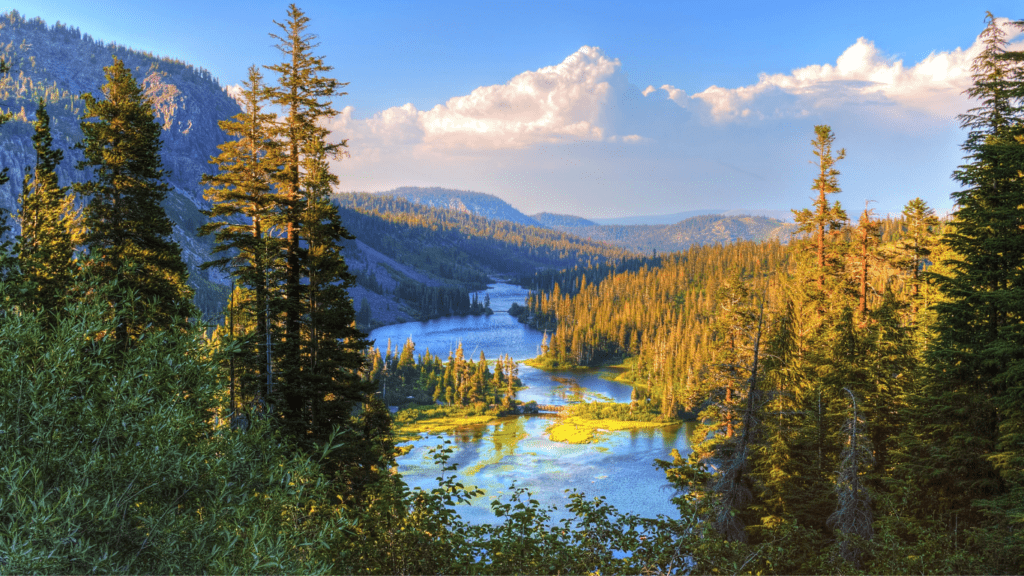I. Introduction
The early 20th century marked a significant turning point in the development of ecology as a scientific discipline. Building on the foundations laid by pioneers like Haeckel and Warming, ecologists began to explore new ideas, methods, and applications that would shape the field for decades to come. This period saw the rise of ecological research institutions, the development of new theories and concepts, and the emergence of applied ecology as a response to growing environmental concerns.
In the early 20th century, ecology was still a relatively new and fragmented field, with different researchers pursuing disparate lines of inquiry. However, several factors contributed to a growing sense of cohesion and purpose among ecologists. One key factor was the establishment of research institutions dedicated specifically to ecological studies. For example, the Carnegie Institution’s Desert Laboratory, founded in 1903, provided a hub for researchers to investigate the unique ecological challenges of arid environments. Similarly, the Woods Hole Marine Biological Laboratory, established in 1888, became a center for marine ecological research.
Another important factor was the increasing recognition of ecology’s relevance to pressing environmental issues. As human populations grew and industrialization expanded, concerns about pollution, conservation, and natural resource management began to mount. Ecologists like Rachel Carson and Paul Ehrlich played a crucial role in raising public awareness of these issues and highlighting the need for scientific understanding to inform policy and practice.
The early 20th century also saw significant advances in ecological theory and methodology. Researchers like Frederic Clements and Henry Chandler Cowles developed new concepts like succession and ecosystem ecology, which helped to explain the complex dynamics of ecological systems. Meanwhile, the development of new tools like radioisotopes and remote sensing enabled ecologists to study ecosystems in greater detail and over larger spatial and temporal scales.
Overall, the early 20th century was a time of great excitement and growth for ecology. As the field continued to evolve, ecologists began to tackle increasingly complex questions about the natural world and humanity’s place within it. In the next section, we will explore the rise of ecological research initiatives and expeditions during this period, which helped to lay the groundwork for modern ecology.
II. The Rise of Ecological Research (1900s-1940s)
The early 20th century saw a surge in ecological research initiatives and expeditions, which played a crucial role in shaping the field of ecology. These efforts were driven by a growing recognition of the importance of understanding the natural world and the need for scientific knowledge to inform conservation and management efforts.
One of the most influential research initiatives of this period was the Carnegie Institution’s Desert Laboratory, established in 1903 in Tucson, Arizona. This laboratory was dedicated to studying the unique ecological challenges of arid environments and developing new methods for understanding and managing these ecosystems. Researchers like Volney Spalding and Daniel MacDougal conducted pioneering work on desert plant ecology, soil science, and hydrology, laying the foundations for modern desert ecology.

Another significant research initiative was the Biological Survey of the American West, conducted by the US Department of Agriculture from 1911 to 1917. This survey aimed to document the region’s natural resources, including its flora, fauna, and ecosystems. Researchers like Vernon Bailey and Florence Merriam Bailey conducted extensive fieldwork, collecting data and specimens that would later become the basis for modern ecological studies.
Expeditions also played a crucial role in advancing ecological knowledge during this period. The 1912-1913 expedition to the Galapagos Islands, led by John Stanley Gardiner, marked a significant milestone in the development of modern ecology. This expedition aimed to investigate the unique ecosystems of the Galapagos and gather data on the islands’ flora and fauna. The expedition’s findings helped establish the Galapagos as a living laboratory for evolutionary biology and ecological studies.
The 1920s and 1930s saw the rise of ecological research stations, which provided a new model for conducting ecological research. These stations, often located in remote areas, enabled researchers to conduct long-term studies of ecosystems and develop new methods for understanding ecological processes. The Hubbard Brook Experimental Forest in New Hampshire, established in 1927, is a classic example of an ecological research station. Researchers like Eugene Odum and Herbert Bormann conducted groundbreaking work on forest ecology, nutrient cycling, and ecosystem dynamics at this site.
The development of new research methods and tools also characterized this period. Researchers like Alfred Emerson and Thomas Park pioneered the use of statistical methods in ecology, enabling the analysis of large datasets and the identification of patterns and trends. Meanwhile, the development of new technologies like radioisotopes and remote sensing enabled ecologists to study ecosystems in greater detail and over larger spatial and temporal scales.
Overall, the rise of ecological research initiatives and expeditions during the early 20th century marked a significant turning point in the development of modern ecology. These efforts helped establish ecology as a distinct scientific discipline, laid the foundations for modern ecological theory and methodology, and paved the way for the applied ecological research that would follow in the latter half of the 20th century.
III. The Development of Ecological Theory (1940s-1960s)
The mid-20th century was a transformative period for ecological theory, marked by the development of new concepts, models, and frameworks that continue to shape the field today. This era saw the rise of ecosystem ecology, the development of population dynamics, and the emergence of new theories on species interactions and community ecology.
One of the key figures of this period was Eugene Odum, whose work on ecosystem ecology helped establish the concept of ecosystems as complex, self-regulating systems. Odum’s 1953 book, “Fundamentals of Ecology,” became a foundational text for the field, outlining the principles of ecosystem functioning and the importance of energy flow and nutrient cycling.
Another influential researcher was Robert MacArthur, who developed the theory of island biogeography. MacArthur’s 1967 book, “The Theory of Island Biogeography,” presented a groundbreaking framework for understanding the distribution and diversity of species on islands and other isolated habitats. This work had significant implications for conservation biology and the management of fragmented habitats.
The 1950s and 1960s also saw the development of population dynamics, led by researchers like Alfred J. Lotka and Vito Volterra. Their work on mathematical models of population growth and regulation laid the foundation for modern population ecology and the management of wildlife populations.
The concept of species interactions also emerged as a major area of research during this period. Researchers like G. Evelyn Hutchinson and Robert Paine explored the complex relationships between predators and prey, competitors, and symbionts, shedding light on the intricate web of interactions that shape ecological communities.
The development of new statistical methods and computational tools also enabled ecologists to analyze complex data sets and simulate ecological processes. Researchers like Raymond Pearl and John Stanley developed new statistical techniques for analyzing population growth and ecological patterns, while the advent of computers enabled the simulation of ecological systems and the testing of theoretical models.
Theories of community ecology also began to take shape during this period. Researchers like Robert Whittaker and John Curtis developed new frameworks for understanding the structure and function of ecological communities, including the concept of niche theory and the development of community classification schemes.
Overall, the mid-20th century was a time of significant theoretical innovation in ecology, laying the groundwork for many of the advances that would follow in the latter half of the 20th century. The development of ecosystem ecology, population dynamics, species interactions, and community ecology provided a solid foundation for understanding the complex relationships between organisms and their environments, and paved the way for the applied ecological research that would follow.
IV. The Emergence of Applied Ecology (1960s-1980s)
The 1960s to 1980s marked a significant shift in ecology, as researchers began to apply ecological principles to real-world problems. This period saw the emergence of applied ecology, which aimed to address pressing environmental issues like pollution, conservation, and natural resource management.

One of the key drivers of applied ecology was the growing awareness of environmental degradation. Rachel Carson’s 1962 book, “Silent Spring,” exposed the harmful effects of pesticides on ecosystems, sparking a national debate about the impact of human activities on the environment. This led to increased public concern and government action, including the establishment of the Environmental Protection Agency (EPA) in 1970.
Ecologists like Paul Ehrlich and John Holdren became prominent voices in the environmental movement, using their research to inform policy and practice. Ehrlich’s 1968 book, “The Population Bomb,” highlighted the urgent need for population control and resource management, while Holdren’s work on energy and resource efficiency helped shape the field of sustainability.
Applied ecology also led to the development of new fields like conservation biology and restoration ecology. Researchers like Michael Soulé and Daniel Janzen worked to preserve and restore ecosystems, while others like Garrett Hardin and William Vogt explored the social and economic dimensions of environmental degradation.
The 1970s saw the rise of environmental policy and legislation, including the Endangered Species Act (1973) and the National Environmental Policy Act (1969). Ecologists played a crucial role in shaping these policies, providing scientific expertise and advocacy for environmental protection.
The development of new technologies like remote sensing and geographic information systems (GIS) also enabled ecologists to study and manage ecosystems more effectively. Researchers like Howard Odum and John Aber used these tools to analyze ecosystem processes and develop new methods for environmental monitoring and management.
Overall, the emergence of applied ecology marked a significant turning point in the history of ecology. By applying ecological principles to real-world problems, researchers and policymakers began to address pressing environmental issues and shape a more sustainable future. This period laid the groundwork for modern environmental science and policy, and continues to influence ecology and environmentalism today.
V. Conclusion
The history of ecology is a rich and complex one, spanning centuries and continents. From the early naturalists to the modern-day researchers, ecologists have sought to understand the intricate web of life on Earth. This chapter has explored the major developments and milestones in the history of ecology, from the ancient Greeks to the modern era.
Ecology has evolved significantly over time, from a descriptive science to a dynamic, interdisciplinary field. The contributions of key figures like Aristotle, Haeckel, and Odum have shaped our understanding of ecosystems and the natural world. The development of new theories, concepts, and methods has enabled ecologists to tackle complex environmental issues and inform policy and practice.
The emergence of applied ecology in the latter half of the 20th century marked a significant turning point in the history of ecology. Ecologists began to apply ecological principles to real-world problems, addressing pressing environmental issues like pollution, conservation, and natural resource management. This led to the development of new fields like conservation biology and restoration ecology, and the establishment of environmental policy and legislation.
Today, ecology continues to evolve, incorporating new technologies, methods, and perspectives. The field is more diverse and interdisciplinary than ever, with ecologists working alongside researchers from other fields to address global challenges like climate change, biodiversity loss, and sustainability.
As we look to the future, the insights and knowledge gained from the history of ecology will be crucial for building a more sustainable and equitable world. By understanding the complex relationships between human societies and the natural world, we can work towards a future that balances human needs with environmental protection and conservation.
In conclusion, the history of ecology is a story of curiosity, discovery, and innovation. From the early naturalists to the modern-day researchers, ecologists have sought to understand and protect the natural world. As we continue to face environmental challenges and opportunities, the history of ecology reminds us of the importance of interdisciplinary collaboration, applied research, and a commitment to sustainability and conservation.
More Reading
- Ecology
- Interconnectedness
- Sustainability
- Environmentalism
- Conservation
- Biodiversity
- Ecosystems
- Human-nature relationships
- Ecological principles
- Sustainable practices
- Environmental policy
- Climate change
- Deforestation
- Pollution
- Ecological restoration
- Regenerative practices
- Indigenous knowledge
- Citizen science
- Community-led initiatives
- Interdisciplinary approaches
- Technological innovations
Explore Micro2media.com
- Listening to the Land: Invasive Plants Disrupt Ecosystem Soundscapes
- Harmony in Nature: Exploring the Intricacies of Ecology
- Greening Up Your Routine: A Guide to Eco-Friendly Products
- Nano-Scale Revolution: How Lab-on-a-Chip Technology is Transforming Environmental Monitoring and Toxicity Testing
- Why Humanity Must Save Nature To Save Itself
- International Day of Forests: 10 Deforestation Facts You Should Know About
- Gut Check: A Disappearing Symphony – How Modern Life is Silencing Essential Microbes in Our Guts
- Empowering Green Initiatives: AI’s Impact on Ecology and Sustainable Living
- Wildfires’ Ripple Effect on Aquatic Ecosystems
- The Role of AI in Promoting Eco-Conscious Lifestyles: Sustainability in the Digital Age
- Franky Zapata: “Sustainability based on physics, not marketing”
- 9 Ecological Strategies to Implement in E-commerce
- Revolutionizing Waste Management: A Closer Look at Ecological Impacts
- Innovation in the Service of Inclusive, Solidary, and Ecological Mobility
- Ecological awareness is not just an individual matter. But which are the most eco-friendly cities in the world?
